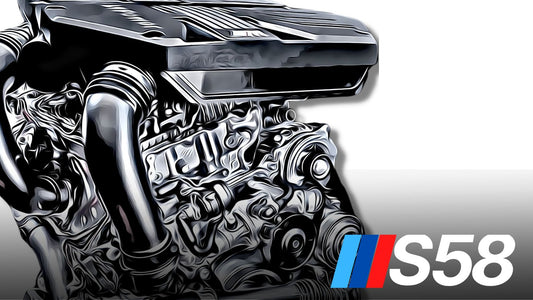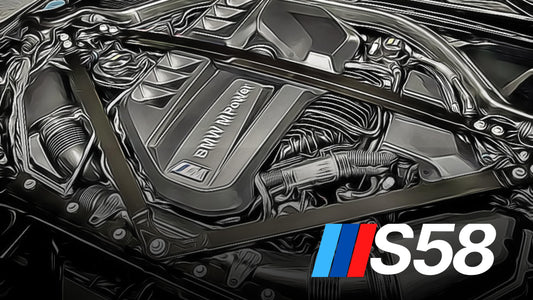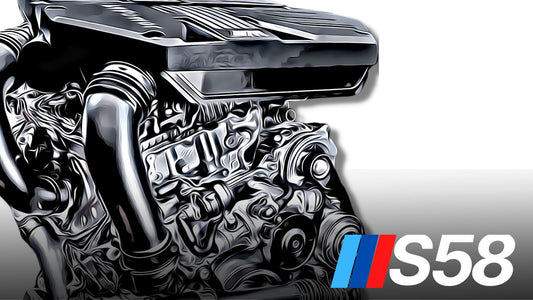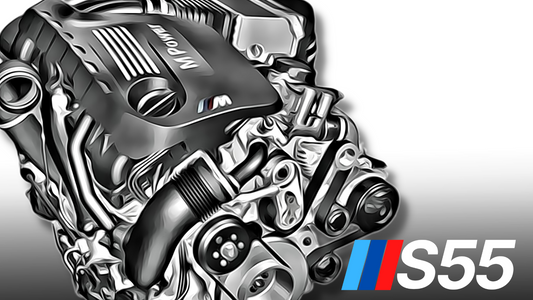The BMW S55 engine is more than just a successor to the N55; it's a beacon of BMW's innovative spirit. Combining efficiency, power, and reliability, the S55 is a testament to BMW's commitment to evolving performance.
BMW's S55 engine is more than just a machine; it's a statement—a commitment to excellence and a nod to the future of high-performance vehicles. Introduced in 2013, the S55 is a 3.0L inline-6 twin-turbocharged engine that showcases BMW's transition back to inline-6 engines for their M division, following the S65 V8-powered E9X M3. This move wasn't just a return to form, but a leap into a new era of efficiency and performance.
Although the S55 is similar to the N55 engine, it stands apart in numerous ways. While both are aluminum 3.0L inline-6 engines equipped with double-VANOS and Valvetronic variable valve timing, the S55 sets itself apart with its twin-turbo setup, akin to the earlier N54 engine.
Power, Efficiency, and Evolution
The S55 didn't just bring back the inline-6 configuration; it redefined it. With a focus on efficiency, the engine offered an initial 15 horsepower increase over its predecessor, the S65 V8, coupled with a 30% surge in torque and a 28% boost in fuel efficiency. This balance of power and efficiency is a testament to BMW's engineering prowess.
Throughout its build cycle, the S55 was tuned differently for various M models, such as the F87 M2, F80 M3, and F82 M4, offering horsepower variants from 359 to a staggering 493. This adaptability makes the S55 not just a powerhouse but a versatile one.
Reliability and Aftermarket Potential
Reliability is key to the S55's design, learning from the N54 and N55's challenges. The engine maintains typical BMW engine reliability with everyday issues like valve cover and oil filter housing gasket leaks. Still, it stands robust against unique problems, barring crank hub failures in high-power scenarios.
The S55's aftermarket scene is vibrant, thanks to its high tolerance for power and its true twin-turbo setup. This has made the engine a favorite among enthusiasts looking to push performance limits.
S55 Technical Specs
| Specification | Details |
|---|---|
| Configuration | Inline-6 |
| Displacement | 3.0L (2,979cc) |
| Aspiration | Twin-Turbocharged |
| Fuel System | Direct Injection |
| Engine Block | Aluminum, closed deck |
| Cylinder Head | Aluminum |
| Valvetrain | DOHC, Valvetronic, Dual VANOS |
| Bore x Stroke | 84 mm × 89.6 mm (3.30 in × 3.50 in) |
| Compression Ratio | 11.5:1 |
| Horsepower | 359-493 hp @ 6,000 RPM |
| Torque (lb-ft) | 295-443 lb-ft @ 1850–5500rpm |
| Redline | 7,600 RPM |
Distinguishing the S55 from the N55
The S55 shares about 75% of its components with the N55, but it's the 25% that makes all the difference. Key distinctions include:
- Crankcase Design: The S55's closed-deck block, in contrast to the N55's open-deck design, offers increased structural rigidity, which is essential for handling higher power and stress.
- Cooling System: The S55 boasts a complex cooling system with dual circuits for the engine and charge air cooling and dedicated oil cooling for the engine and transmission.
- Turbocharger Configuration: Moving away from the N55's single twin-scroll turbocharger, the S55 employs a twin-parallel mono-scroll turbocharger setup, enhancing its performance profile.
- Internal Components: The S55 features improved internals like a revised crankshaft, pistons, rods, and an enhanced oiling system tailored for higher performance demands.
Conclusion: The S55: A Symbol of M Division's Evolution
The BMW S55 engine is more than just a successor to the N55; it's a beacon of BMW's innovative spirit. Combining efficiency, power, and reliability, the S55 is a testament to BMW's commitment to evolving performance. Whether on the track or the street, the S55 symbolizes what BMW's M Division.


















